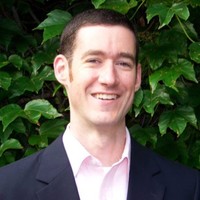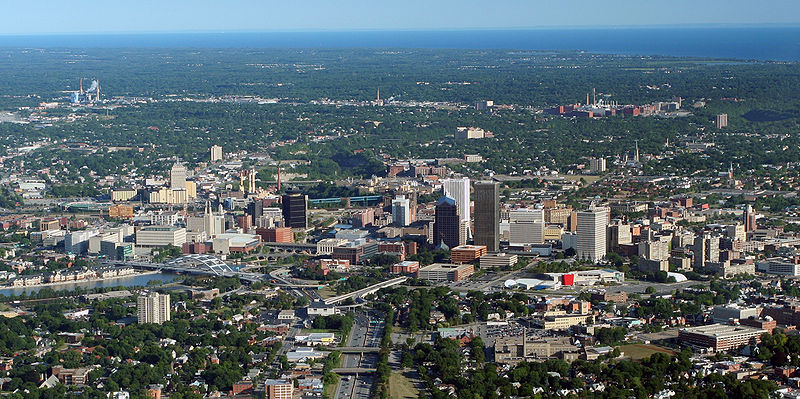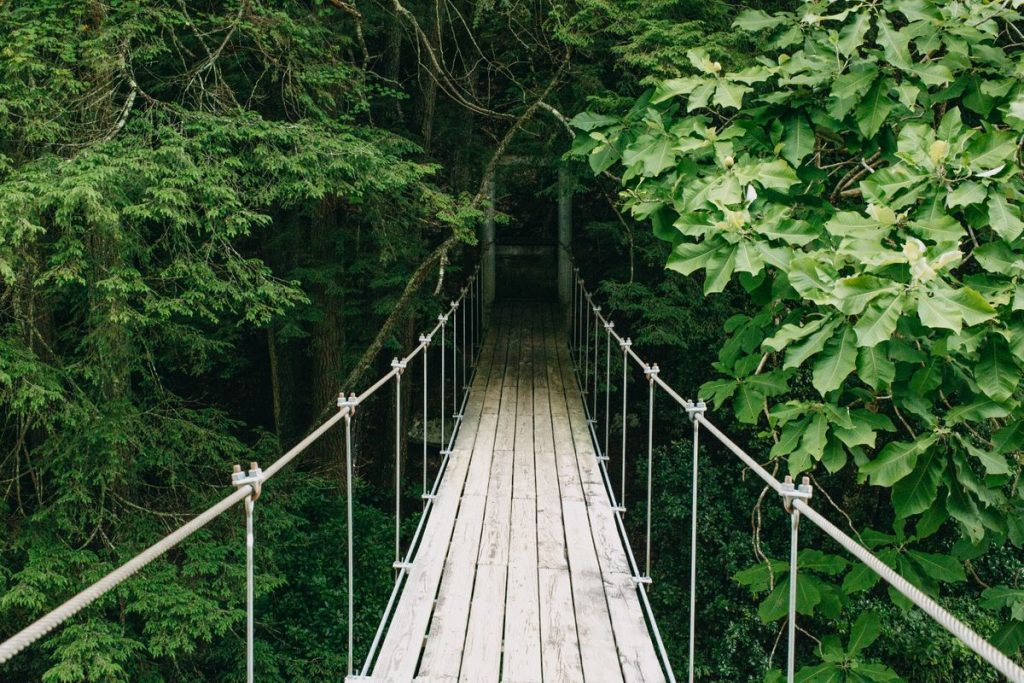
Guest blog by Doug Kelley, Associate Professor at University of Rochester
I grew up doing a lot of hiking and backpacking in the woods of Alabama. Being outside connected me to a world that seemed more fundamental, more enduring, less corrupted by the mistakes of humankind. I felt empowered by the ethos of backpacking especially, that my own two feet could take me through the world from one beautiful place to another, and when I was gone, I would leave no trace, so others might enjoy the same beauty. I could forget daily stresses in favor of long conversations with friends, basking in sunshine and endorphins. I was (and am) a naturalist. I chose a college in the Appalachian mountains, and spent summers back in the Alabama woods, a counselor at Camp McDowell, quick to volunteer to lead kids on hikes.
Over time, my passion for being outdoors led to an idea that seemed surprising at first: for a naturalist like me, who wants to spend as much time outdoors as possible, the best place to live is not in the woods but in a densely-packed city center. Urban density allows me to live close to my workplace and commute by bike or public transportation, so I’m outdoors for an hour every day, routinely, without committing extra time. Urban density means there’s a small market a block from my house, a pharmacy two blocks beyond, a library within five blocks, a hardware store and supermarkets easily accessible by bike, and a huge number of restaurants, cafes, bars, and coffee shops nearby. In a city center, sidewalks and bike lanes and bus routes offer dense connections. When traveling to all these places and more, I can be outdoors, enjoying the same sunshine and exercise as on those Alabama trails, years ago.
Without urban density, neither I nor my neighbors — who I see often on sidewalks and porches — could benefit from so many amenities. If lots were bigger and residences weren’t arranged with as much density, our destinations would be pushed further away, often too far for walking or biking. In fact, many destinations would cease to exist. Markets and restaurants and shops are businesses that rely on having enough feet cross their threshold daily. Urban density puts customers close. Or, from the customers’ point of view, urban density puts businesses close.
A naturalist’s first instinct might be to live far outside the city center, near trails and hills and streams. Wistfully I can imagine myself stepping out of a house abutting Mendon Ponds Park, a favorite place to ski and hike and cycle, ready to start an outing without even getting in a car. But to gain that privilege, I would have to trade away countless hours of outdoor time enabled by my city life. Living by those trails, I’d be cooped up in a car every time I commuted, every time I needed groceries, every time I wanted a restaurant meal. RTS buses don’t go that far out. Altogether, that life would allow me far less time in the outdoors I love. Much better to drive to the trails and live in the city.
A favorite hiking destination at Camp McDowell was St. Christopher’s Pool, at the head of a canyon and beneath a waterfall near the edge of the property. But in those years, St. Chris’s was badly defaced, its rocks and water turned a sickly shade of orange by runoff from the coal mine upstream. The Rev. Mark Johnston, executive director of Camp, waged a legal battle that ultimately brought the mine’s owners to remediate the stream, largely restoring St. Christopher’s. Mark also reminded campers and staff often that though the mine owners were culpable for property damage, all people are responsible for being good stewards of shared resources, and we ourselves contributed to the damage when we used the electricity produced by that coal. It was a tough lesson, and an important one.
That lesson, too, leads naturalists to value urban density — because it seriously reduces our own contributions to the human damage of natural places. New York City has the highest population density of any large area in the United States, with 27,000 residents per square mile. New York City also has a vastly smaller per-capita carbon footprint than typical American places: in 2015, an average resident produced emissions equivalent to 6.1 metric tons of carbon dioxide, less than a third of the national average of 19. Likewise, an average New York City resident uses far less energy and produces far less waste than an average American. It’s no coincidence that urban density reduces carbon footprints, energy use, and waste. Density enables car-free transportation, which burns little or no fossil fuel. Density also makes residences more efficient, because apartments are insulated by their neighbors, and because smaller residences almost always require less heating and cooling. And as anybody who’s cleaned out their garage knows, having more space inevitably leads to accumulation of more stuff — not all useful!
Reflecting more deeply, the lesson of stewardship and the naturalist’s leave-no-trace ethos are fundamentally about equity, and urban density promotes equity, too. Beyond leaving natural places untrammelled and less-damaged by climate change, density makes healthy and pleasant lifestyles available to all, even those who never spend time in the woods, either for lack of interest or for lack of opportunity. Regardless of social and economic status, almost everybody can walk and bike, which opens a myriad of possibilities in a well-designed city center. Public transportation is more broadly affordable than personal automobile ownership. And density matters even more for people with disabilities, for whom nearby amenities are no mere matter of convenience.

Obviously, Rochester is not as dense as New York City, but at 6100 residents per square mile, its density exceeds many American cities, including Austin, TX (3200), Cleveland, OH (5100), and even the famously bike-friendly Portland, OR (4800). Most of Rochester proper and some suburbs boast sidewalks and gridded streets, making walking and biking easier and more enjoyable. Gems like the Canal Path and River Trail connect pedestrians and cyclists to more amenities over greater distances. Regional bike infrastructure is being steadily improved and expanded. Many neighborhoods in our region are great places for the urban naturalist lifestyle.
Some of Rochester’s density was automatic, because the city predates personal automobiles. But now, building and maintaining people-friendly city centers requires conscious choices, good policies, and ongoing input from citizen-naturalists. Reconnect Rochester has made major efforts to encourage urban density and make outdoor city life more pleasant and equitable. The work continues, and you can help. For starters, Rochester’s zoning laws have put limits on density, but are now being reviewed for revision, so leave a comment supporting urban density. Urge leaders to implement and expand bike master plans. Nearly every local municipality has one, thanks largely to the Rochester Cycling Alliance (for example, see the City of Rochester plan). Or get involved with Complete Streets Makeover for hands-on projects making outdoor urban spaces more practical and beautiful. Get plugged in to Reconnect Rochester’s work so you can learn about opportunities to volunteer for hands-on projects, attend public meetings, sign petitions, and be part of the effort.
In the end, my bike commute may not have the same grandeur as summiting one of the Adirondack High Peaks, but doing it every day makes it more important to my life, health, and peace of mind. On the River Trail in the morning, I see groundhogs and rabbits frequently, and also deer, turkeys, hawks, and occasionally a fox or heron. In the afternoon, I enjoy a grand river vista of the Freddie-Sue Bridge with downtown buildings towering beyond. For one precious week every spring, I revel in an explosion of color when the Oxford Street tulip trees bloom. And knowing that urban density not only helps me enjoy the outdoors, but also helps me leave no trace and allows many others the same benefits — that makes these natural experiences sweeter still.




Doug,
Thank you for this great write up and reflection.
Thank you, too, for your commitment to RCA & Reconnect Rochester.
Thanks for this post, Doug. It’s very important for people to understand that the best way to preserve nature is to not encroach on it.
This makes so much sense. I’ve lived in center city since 1997 and am out and about for hours each day. My dog, Cookie, and I, find daily joy in discovering the beauty that surrounds us. There’s much to love in our city.
I grew up in Brooklyn, NY. I was fortunate that I could easily walk to and enjoy multiple parks, and the subway disked us to a number of world famous parks. Summers were spent at sleep away camp in the Poconos with other kids whose parents worked and wanted us to experience a different type of environment. I wish every urban kid could go to the country for 10 weeks and learn to appreciate “nature.” When I came to Rochester to go to college in the ’60s I marveled at how close the city was to the country, and that the city has great parks as well. I’ve always lived in cities, and still do. I live in what I consider the best boundary neighborhood that offers anything from life’s necessities to full blown forest just as 5 or 10 minute walk away. I wish that the city and county governments would make a concerted effort to plant as many trees as possible in urban neighborhoods, as well as all the vacant lots so people could escape some of the heat, and birds could find homes in every block of the city.
Amazing summary of a very important issue thanks!
Fabulous post. Humans were made to move and interact with their environment. It articulates what an organic urban space can be to improve the quality of life for everyone. It also characterizes what a “Blue Zone” is. A place where people can move, connect with other people and the environment and reduce the stress of modern day life.